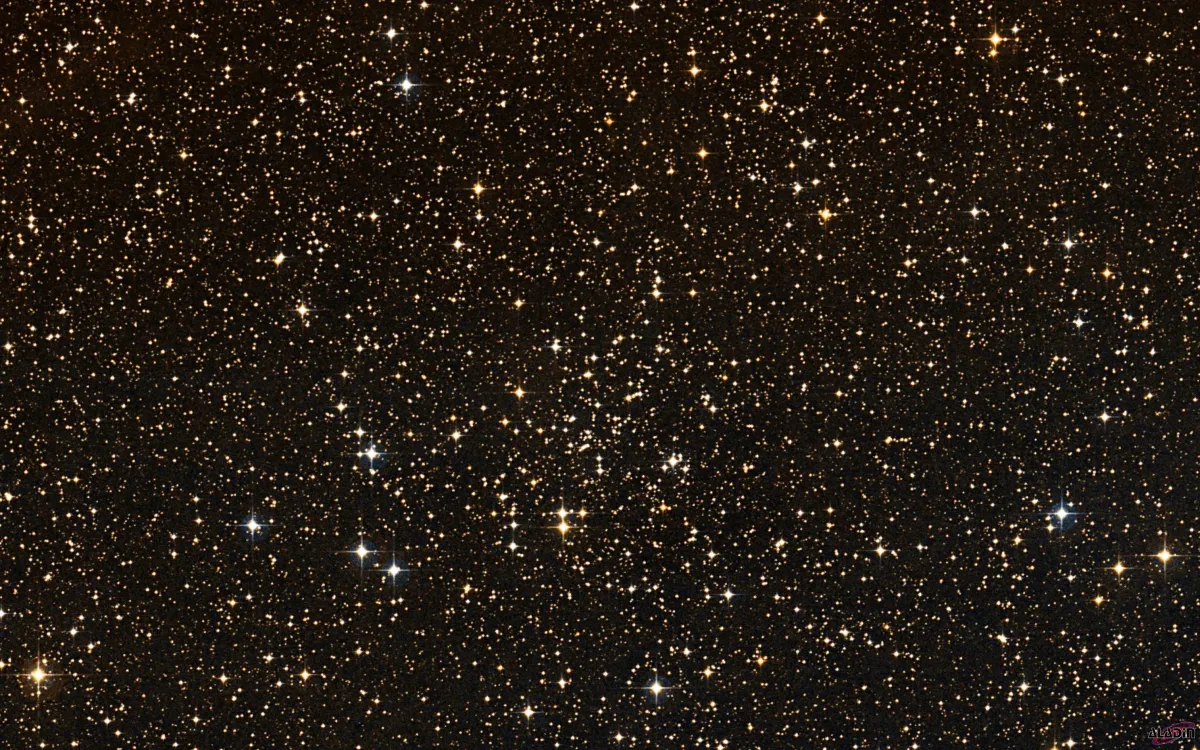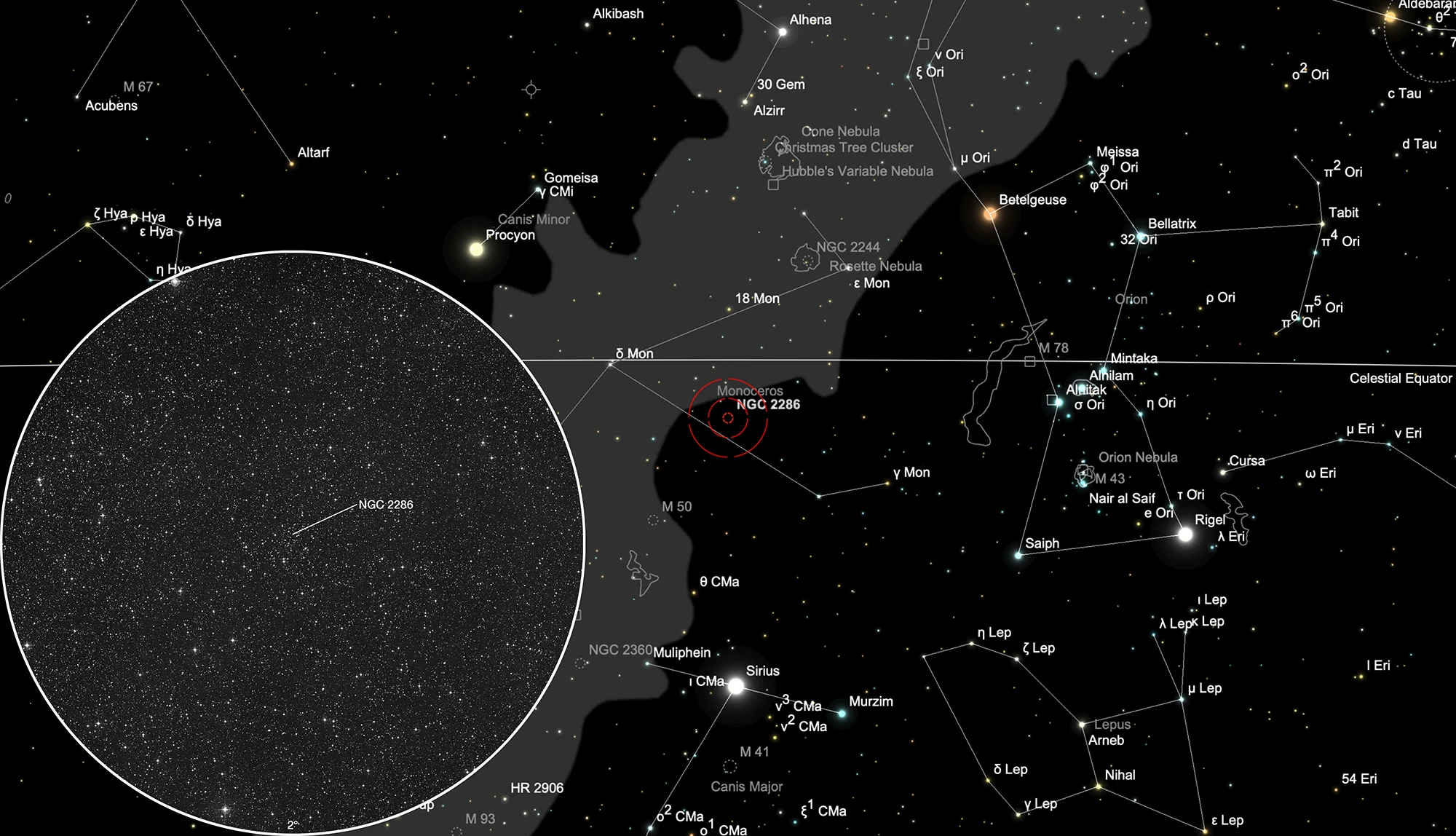Open Cluster NGC 2286

History
This open cluster was discovered by German-British astronomer William Herschel on 6 January 1785 using his 20 foot Speculum reflector with 18.7-inch aperture. He listed it as VIII 31 and noted: «A large cluster of scattered stars, not very rich.» [463]
John Herschel listed the cluster as h 408, made two observations and described it on 4 January 1827 (sweep 41) as: «A loose large irregular scattered cluster of about 100 st 9...15m.» [466]
Physical Properties
| Designation | NGC 2286 |
| Type | OCL (IV3m) |
| Right Ascension (J2000.0) | 06h 47m 40.1s |
| Declination (J2000.0) | -03° 08' 52" |
| Diameter | 15 arcmin |
| Visual magnitude | 7.5 mag |
| Metric Distance | 2.897 kpc |
| Dreyer Description | Cl, L, C, ab 100 st 9…15 |
| Identification, Remarks | WH VIII 31; h 408; GC 1453; OCL 548 |
Finder Chart
The open cluster NGC 2286 can be found in the constellation Monoceros. On 2 January it in opposition with the Sun and is therefore highest in the sky at local midnight.
